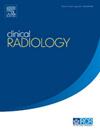Review and reflections on live AI mammographic screen reading in a large UK NHS breast screening unit
IF 2.1
3区 医学
Q2 RADIOLOGY, NUCLEAR MEDICINE & MEDICAL IMAGING
引用次数: 0
Abstract
The Radiology team from a large Breast Screening Unit in the UK with a screening population of over 135,000 took part in a service evaluation project using artificial intelligence (AI) for reading breast screening mammograms.
AIM
To evaluate the clinical benefit AI may provide when implemented as a silent reader in a double reading breast screening programme and to evaluate feasibility and the operational impact of deploying AI into the breast screening programme.
The service was one of 14 breast screening sites in the UK to take part in this project and we present our local experience with AI in breast screening.
MATERIALS AND METHODS
A commercially available AI platform was deployed and worked in real time as a ‘silent third reader’ so as not to impact standard workflows and patient care. All cases flagged by AI but not recalled by standard double reading (positive discordant cases) were reviewed along with all cases recalled by human readers but not flagged by AI (negative discordant cases).
RESULTS
9,547 cases were included in the evaluation. 1,135 positive discordant cases were reviewed, and one woman was recalled from the reviews who was not found to have cancer on further assessment in the breast assessment clinic. 139 negative discordant cases were reviewed, and eight cancer cases (8.79% of total cancers detected in this period) recalled by human readers were not detected by AI. No additional cancers were detected by AI during the study.
CONCLUSION
Performance of AI was inferior to human readers in our unit. Having missed a significant number of cancers makes it unreliable and not safe to be used in clinical practice.
AI is not currently of sufficient accuracy to be considered in the NHS Breast Screening Programme.
回顾和反思实时人工智能乳房x线摄影屏幕阅读在英国大型NHS乳房筛查单位
来自英国一家拥有超过13.5万名筛查人群的大型乳房筛查部门的放射学团队参与了一项使用人工智能(AI)阅读乳房筛查乳房x光片的服务评估项目。评估人工智能在双读乳房筛查项目中作为无声阅读器实施时的临床效益,并评估将人工智能部署到乳房筛查项目中的可行性和操作影响。该服务是英国参与该项目的14个乳房筛查站点之一,我们介绍了人工智能在乳房筛查中的本地经验。材料和方法部署了商用人工智能平台,并作为“沉默的第三方阅读器”实时工作,以免影响标准工作流程和患者护理。所有被人工智能标记但未被标准双读召回的病例(阳性不一致病例)与所有由人类读者召回但未被人工智能标记的病例(阴性不一致病例)一起进行审查。结果共纳入9547例病例。对1135例阳性不一致病例进行了审查,并从审查中召回了一名妇女,她在乳房评估诊所进行进一步评估时未发现患有癌症。审查了139例阴性不一致病例,人类读者回忆的8例癌症(占同期检测到的癌症总数的8.79%)未被人工智能检测到。在研究期间,人工智能没有检测到其他癌症。结论本单位人工智能的阅读能力不如人类。由于错过了大量的癌症,因此在临床实践中使用它是不可靠和不安全的。人工智能目前没有足够的准确性,不能在NHS乳房筛查计划中考虑。
本文章由计算机程序翻译,如有差异,请以英文原文为准。
求助全文
约1分钟内获得全文
求助全文
来源期刊

Clinical radiology
医学-核医学
CiteScore
4.70
自引率
3.80%
发文量
528
审稿时长
76 days
期刊介绍:
Clinical Radiology is published by Elsevier on behalf of The Royal College of Radiologists. Clinical Radiology is an International Journal bringing you original research, editorials and review articles on all aspects of diagnostic imaging, including:
• Computed tomography
• Magnetic resonance imaging
• Ultrasonography
• Digital radiology
• Interventional radiology
• Radiography
• Nuclear medicine
Papers on radiological protection, quality assurance, audit in radiology and matters relating to radiological training and education are also included. In addition, each issue contains correspondence, book reviews and notices of forthcoming events.
 求助内容:
求助内容: 应助结果提醒方式:
应助结果提醒方式:


